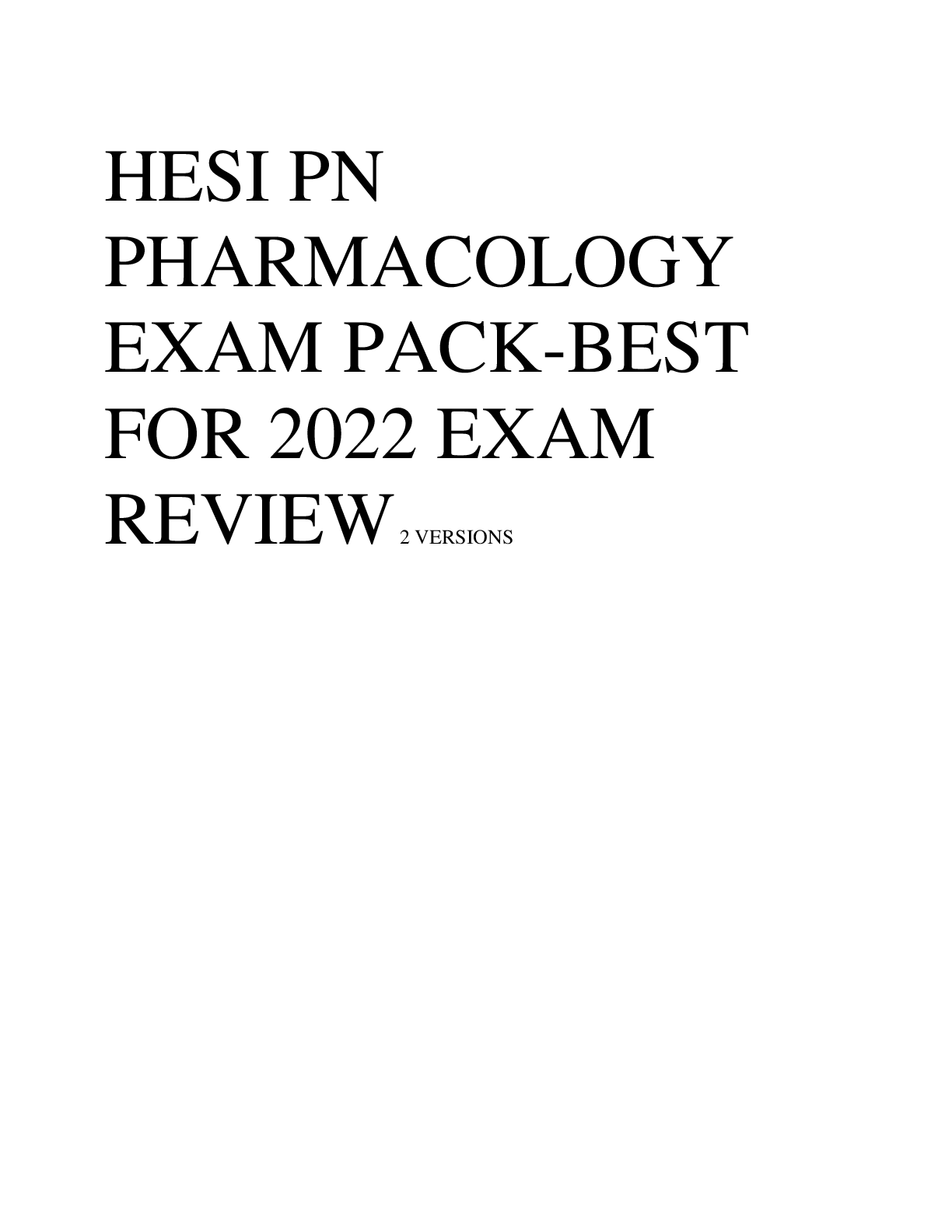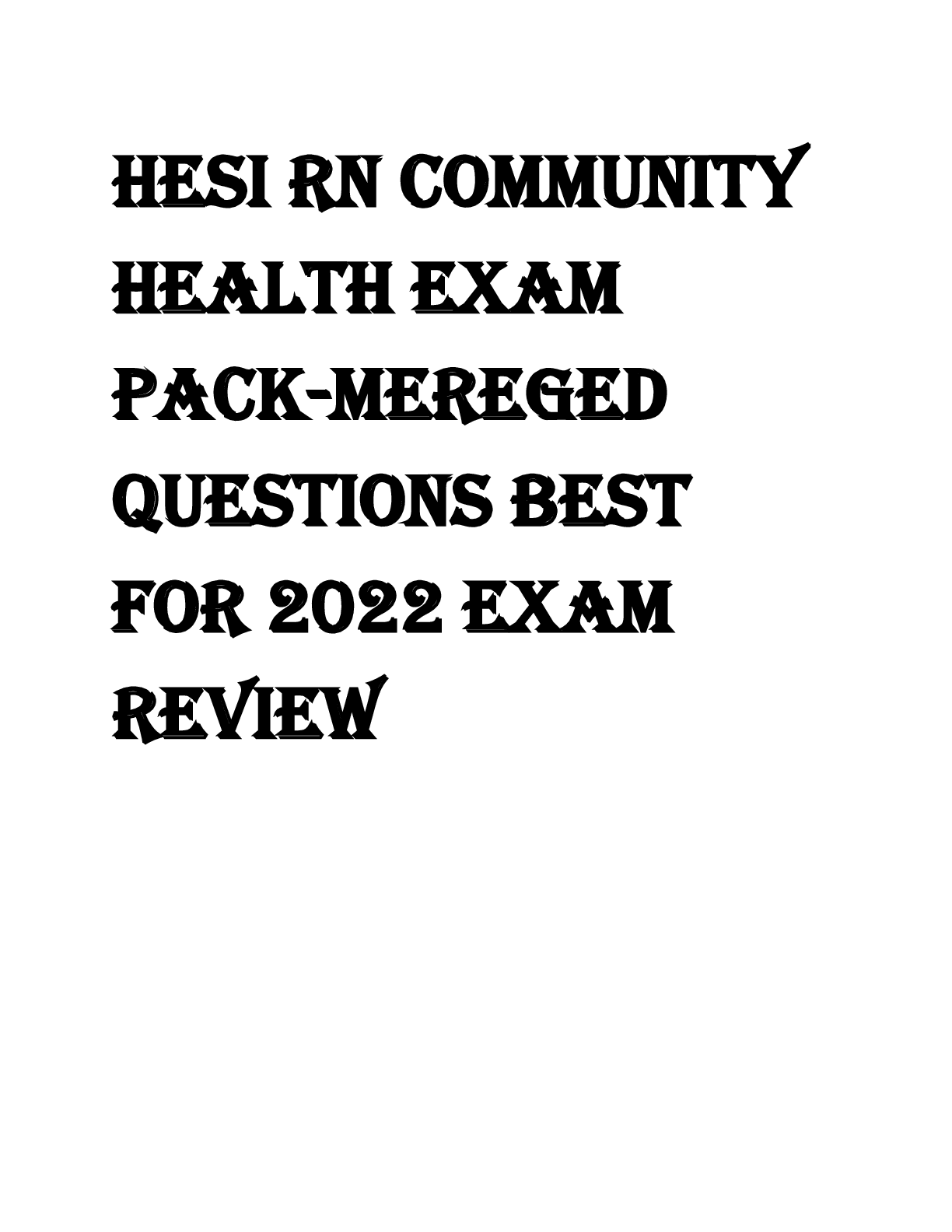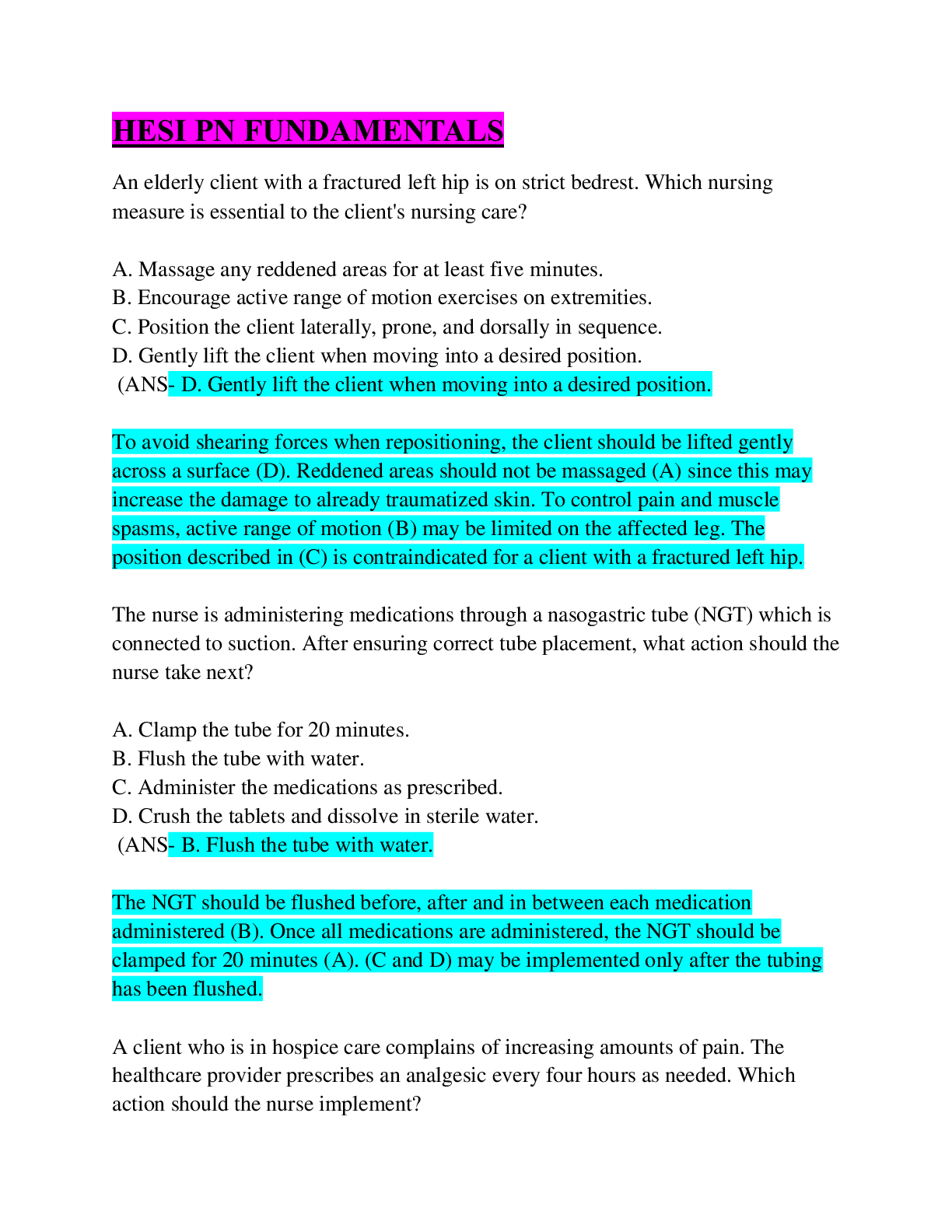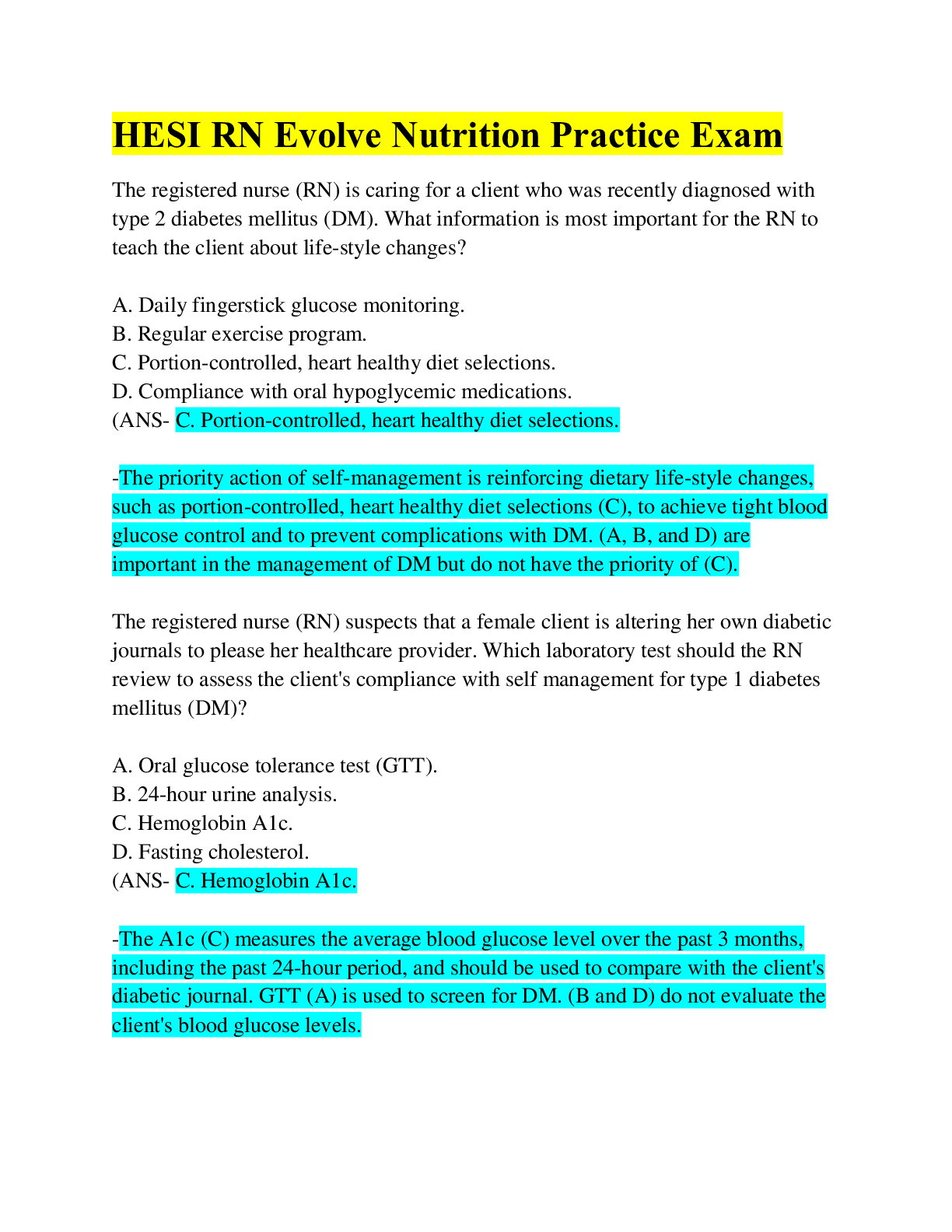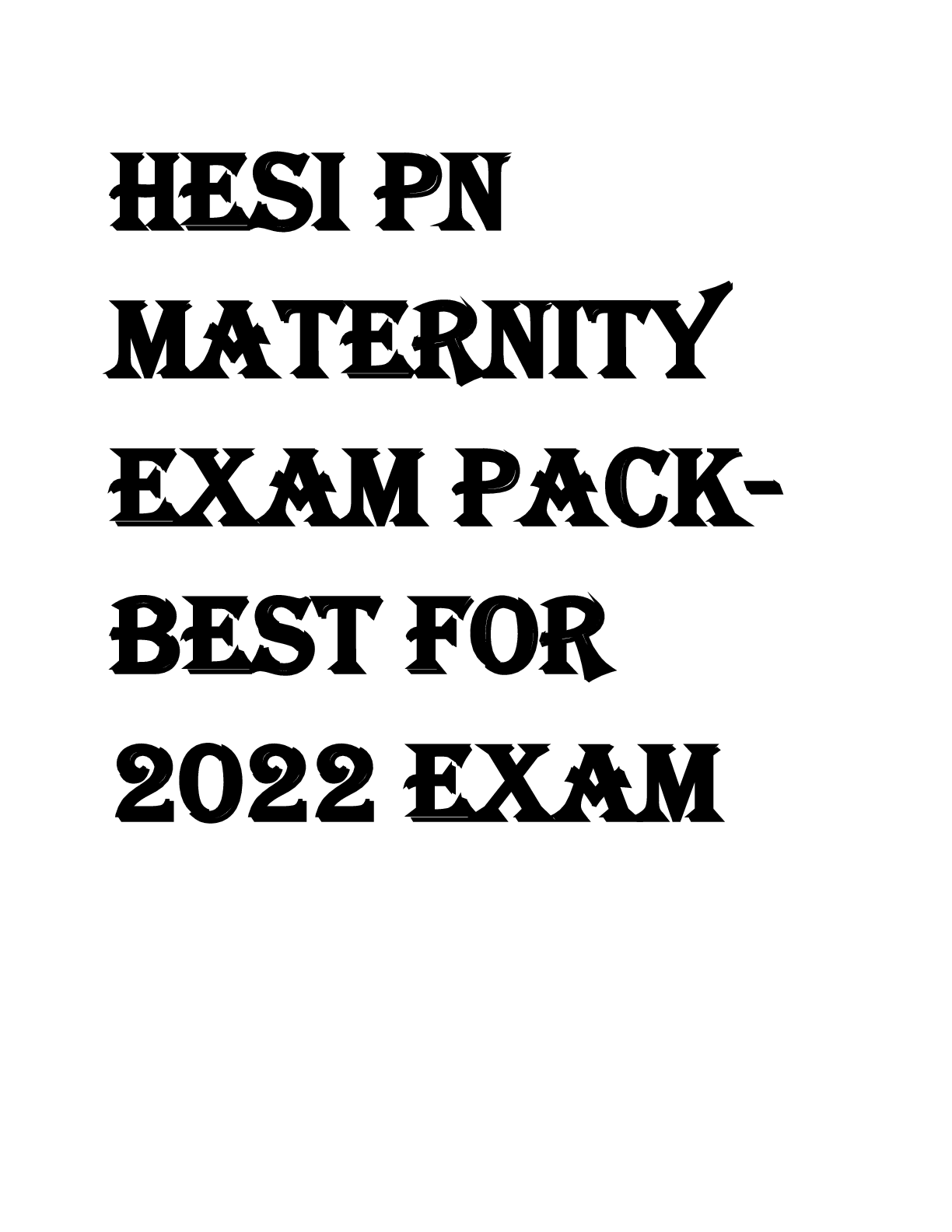Health Care > HESI > HESI Medical Surgical LPN - EXAM PACK BEST FOR 2022 EXAM Q&A WITH RATIONALES (All)
HESI Medical Surgical LPN - EXAM PACK BEST FOR 2022 EXAM Q&A WITH RATIONALES
Document Content and Description Below
HESI Medical Surgical LPN - EXAM PACK BEST FOR 2022 EXAM Q&A WITH RATIONALES Question 1 The nurse is providing care for a patient who is unhappy with the health care provider’s care. The patient ... signs the Against Medical Advice (AMA) form and leaves the hospital against medical advice. What should the nurse include in the documentation of this event in the patient’s medical record or on the AMA form? 1. Documentation that the patient was informed that he or she cannot come back to the hospital 2. Documentation that the patient wasinformed that he orshe wasleaving against medical advice 3. Documentation that the risks of leaving against medical advice were explained to the patient 4. Documentation of any discharge instructions given to the patient 5. Documentation indicating an incident report has been completed Correct Answer: 2,3,4 Rationale 1: It should be clearly documented that the patient was advised and understands that he or she can come back. Rationale 2: It should be clearly documented in the patient’srecord and on the AMA form that the patient was advised that he or she was leaving against medical advice. Rationale 3: It should be clearly documented that the patient understandsthe risks of leaving against medical advice. Rationale 4: The AMA form includes the name of the person accompanying the patient and any discharge instructions given. Rationale 5: Facility policy may require that an incident report be completed, but it must not be referenced in the chart. The patient’srecord is a legal document, so the nurse should never document that he or she filed an incident report. Question 2 A nurse documents this statement in a patient’s medical record: “2/25/–, 2235. At 2015 patient awoke suddenly and complained ofshortness of air. Pulse oximetry reading was 82% on room air and audible wheezes could be heard.” This documentation meets which documentation guidelines? 1. Documentation istimely 2. Documentation is concise 3. Documentation is objective 4. Documentation includes date and time of entry 5. Documentation is complete and accurate Correct Answer: 2,3,4,5 Rationale 1: The nurse should document as soon as possible after an observation is made or care is provided. The entry was made in the patient’s medical record at least 2 hours after the patient complaint and should be labeled late entry. Rationale 2: This entry describes the situation fully but is concise. Rationale 3: The nurse describesfactual events that can be seen, heard, smelled, or touched. It is important to be objective and avoid vague statements that are subjective. Rationale 4: Both the date and the time of the entry are documented. Rationale 5: The nurse should document only facts: what he or she can see, hear, and do. Question 3 A nurse documentsthe following in a patient’s medical record: “2/1/ , 1500. Patient appears weak and faint. Patient’s skin is moist and cool, vomited bright red blood with clots. Health care provider notified and order received to give 2 u of packed red blood cells if stat Hgb is < 8.0. Pain medication will be given.” This documentation meets which documentation principle? 1. Document objectively. 2. Do not document proceduresin advance. 3. Use approved abbreviations. 4. Document changesin patient condition. Correct Answer: 4 Rationale 1: Documentation should be objective and avoid vague statements that are subjective. Only factual occurrences that can be seen, heard, smelled, or touched should be described. The use of the word “appears” issubjective and could be manipulated later should the treatment or judgment be challenged. Rationale 2: The nurse has documented that pain medication will be given. Thisis documenting in advance. Rationale 3: The Joint Commission has designated the inappropriateness of “u” as an abbreviation. “U” should be written out as “unit(s).” If unsure whether the abbreviation is correct, the nurse should spell out the word; “<” can be misinterpreted, so it should be spelled out as “less than.” Rationale 4: In general, employers as well asstate, federal, and professional standardsrequire documentation to include initial and ongoing assessments, any change in the patient’s condition, therapies given and patient response, patient teaching, and relevantstatements by the patient. Question 4 A nursing unit has changed its documentation system to documenting by exception. How will this system save time? 1. It eliminateslengthy or repetitive documentation. 2. It allowsflexibility and description in the documentation. 3. It allowsthe reader to easily locate information about a specific problem. 4. It allowsfor quick and easy retrieval of information. Correct Answer: 1 Rationale 1: Documenting by exception eliminates lengthy or repetitive documentation. Rationale 2: Flexible and descriptive documentation is an advantage of the narrative system. Rationale 3: PIE charting allows easy location of information about a specific problem. Rationale 4: The electronic health record allowsfor quick and easy retrieval of information. Question 5 A hospital is considering changing its documentation system to reduce the number of medication errors. Which system should the hospital investigate? 1. Problem, intervention, evaluation (PIE)system 2. Electronic medical record 3. Problem-oriented medical record 4. Narrative system Correct Answer: 2 Rationale 1: The PIE system consists of a list of the patient’s problems, interventionstaken to alleviate the problems, and evaluation of the patient’s response to the interventions. This system does not have the specific benefit of reducing medication errors. Rationale 2: The electronic medical record decreases errors and allowsfor the reconciliation of the patient’s medications on admission, daily, and on discharge. Rationale 3: The five components of the problem-oriented medical record are baseline data, a problem list, a plan of care for each problem, multidisciplinary progress notes, and a discharge summary. This system does not have the specific benefit of reducing medication errors. Rationale 4: Narrative documentation does not have the specific benefit of reducing medication errors. Question 6 Which nursing activities are examples of independent functions of the nursing role? 1. Teaching a soon-to-be-discharged patient about the medication regimen that the health care provider has prescribed 2. Talking with the patient about his or her abilitiesto manage personal hygiene activities while in the usual state of health at home 3. Incorporating adaptive techniques into nursing care as recommended by occupational therapy 4. Administering analgesic medication ordered by the health care provider 5. Introducing oneself to, and interviewing, the patient to collect data about physical health status Correct Answer: 2,5 Rationale 1: Teaching the patient about medications prescribed by the health care provider is an interdependent activity. Rationale 2: This activity is part of the assessment process, which is an independent activity that nurses may perform, based on their education and skills. Rationale 3: Working in coordination with another health team member is an interdependent activity. Rationale 4: Administering medication prescribed by the health care provider is an example of a dependent activity. Rationale 5: These activities are included in assessment, which is an independent activity that nurses may perform, based on their education and skills. Question 7 The nurse is caring for a 70-year-old patient who was just admitted to an inpatient rehabilitation center. The patient had required total parenteral nutrition for several days, but recently resumed and is tolerating a regular diet. She has another 4 days left in a course of intravenous antibioticsto complete treatment of a positive central line culture. Which nursing action, required in the care of this patient, is considered a dependent role function? 1. Requesting that the health care provider order a consult because the patient statesthat her dentures no longer fit properly and she has trouble chewing 2. Asking the nursing assistant to demonstrate to the patient how to operate the callsystem 3. Interviewing the patient to assess whether she needs assistance with getting out of bed 4. Administering the antibiotics prescribed by the health care provider Correct Answer: 4 Rationale 1: Assessing that the patient has a need that requires further assessment by other team members and communicating that need to the appropriate team member is an example of an interdependent activity. Rationale 2: This is an independent activity that nurses may perform or delegate, based on their and the delegate’s education and skills. Rationale 3: Assessment is an independent activity that nurses may perform, based on their education and skills. Rationale 4: Dependent activities are those prescribed by the health care provider and carried out by the nurse. [Show More]
Last updated: 1 year ago
Preview 1 out of 124 pages
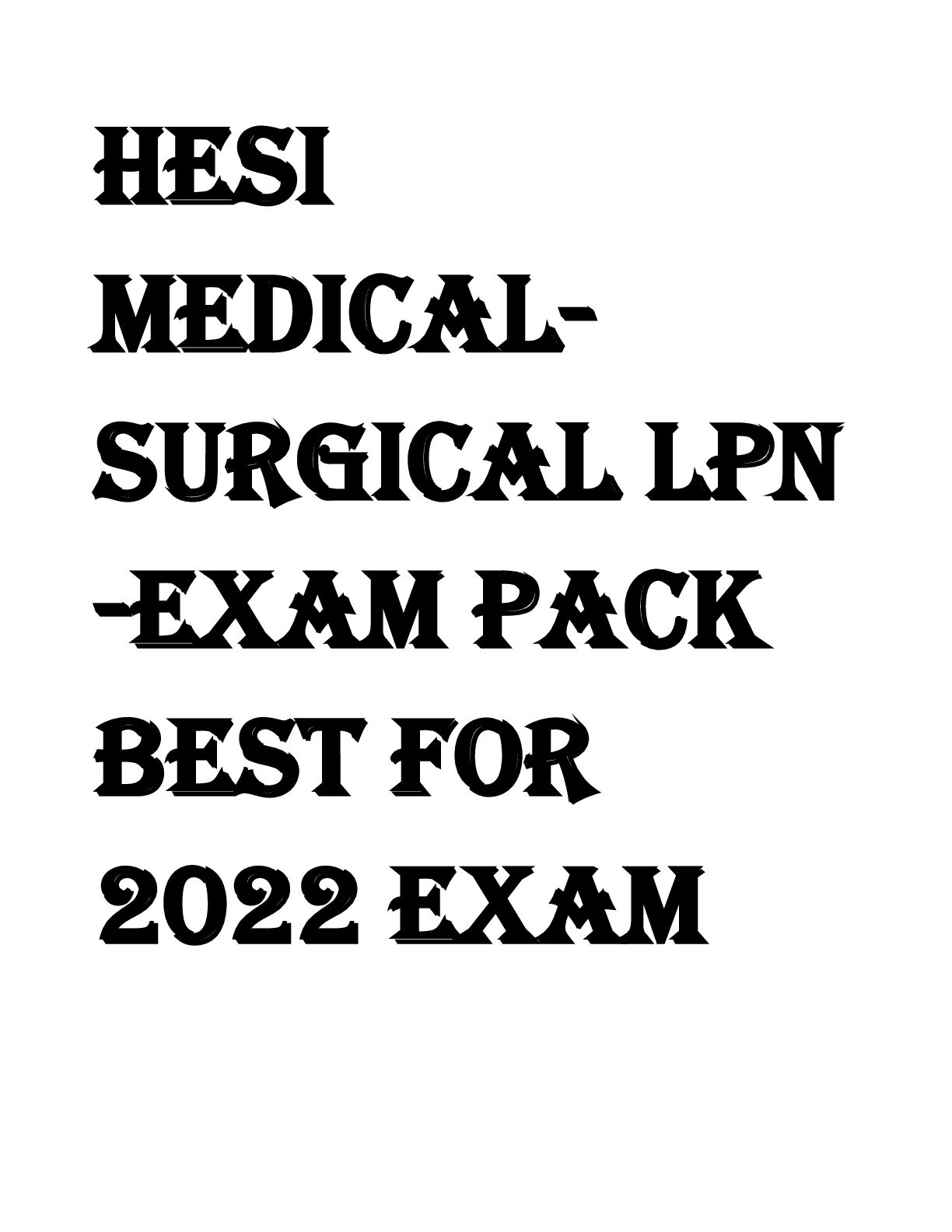
Reviews( 0 )
Document information
Connected school, study & course
About the document
Uploaded On
Jul 08, 2022
Number of pages
124
Written in
Additional information
This document has been written for:
Uploaded
Jul 08, 2022
Downloads
0
Views
51
 Exit Exam Brand New Questions and Answers Guaranteed Pass With A+ Score.png)


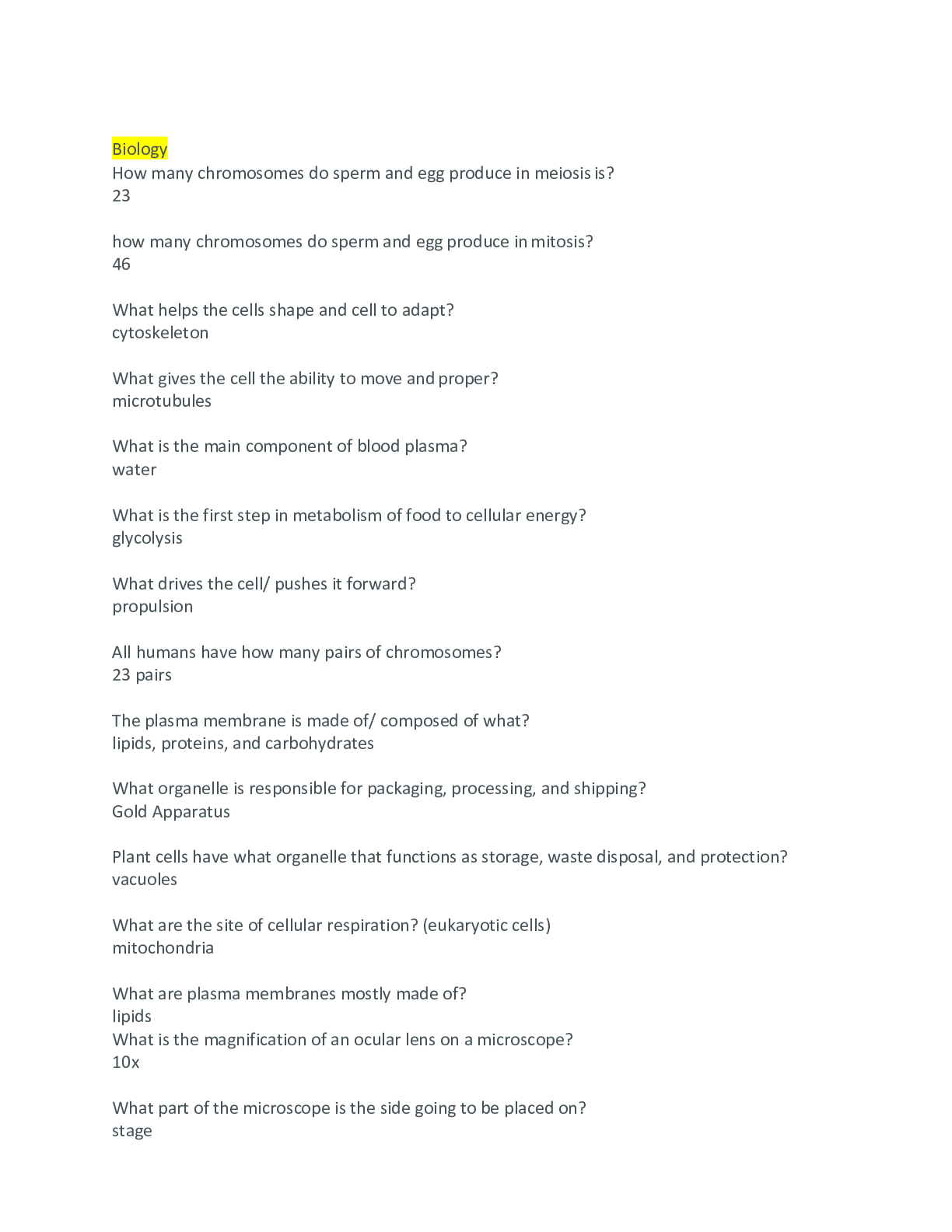


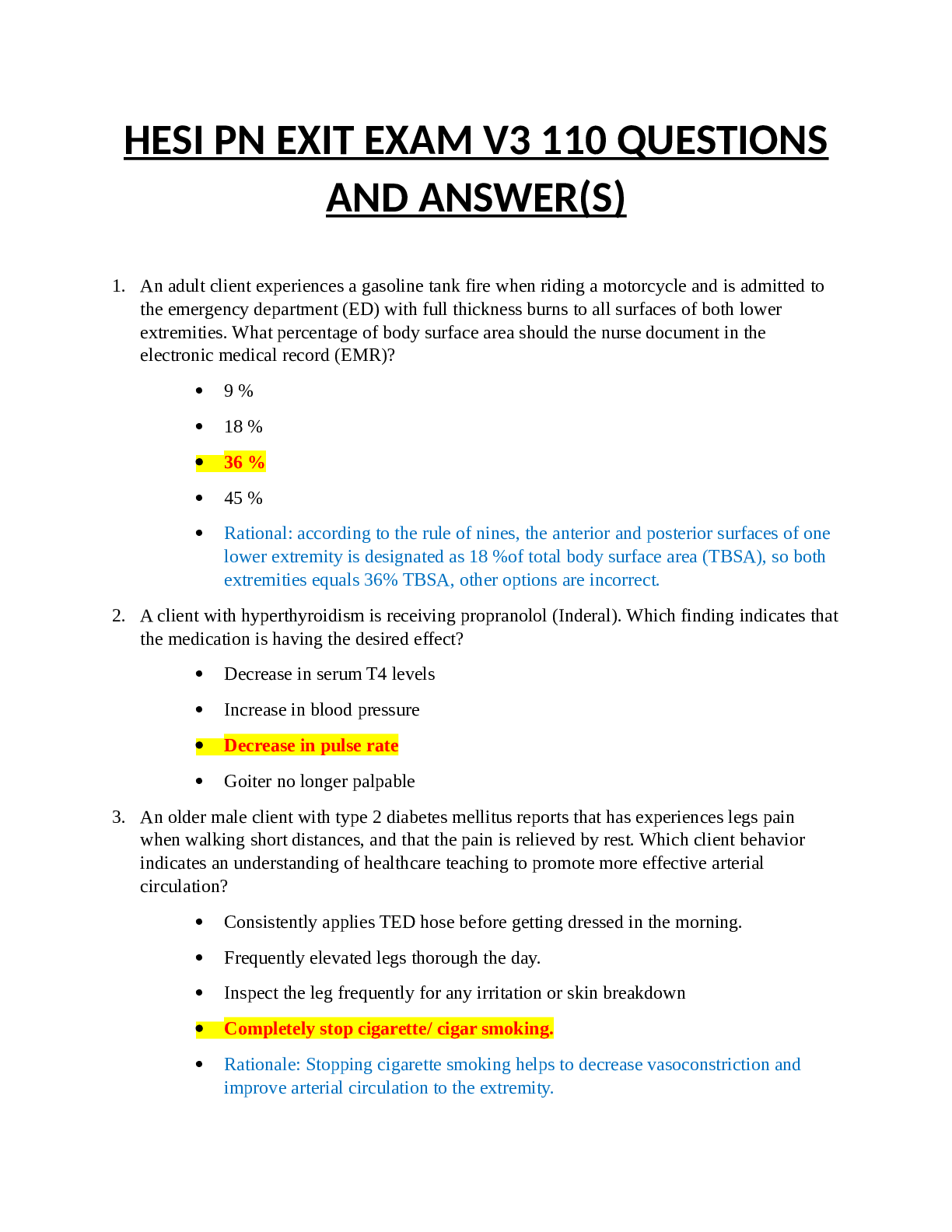
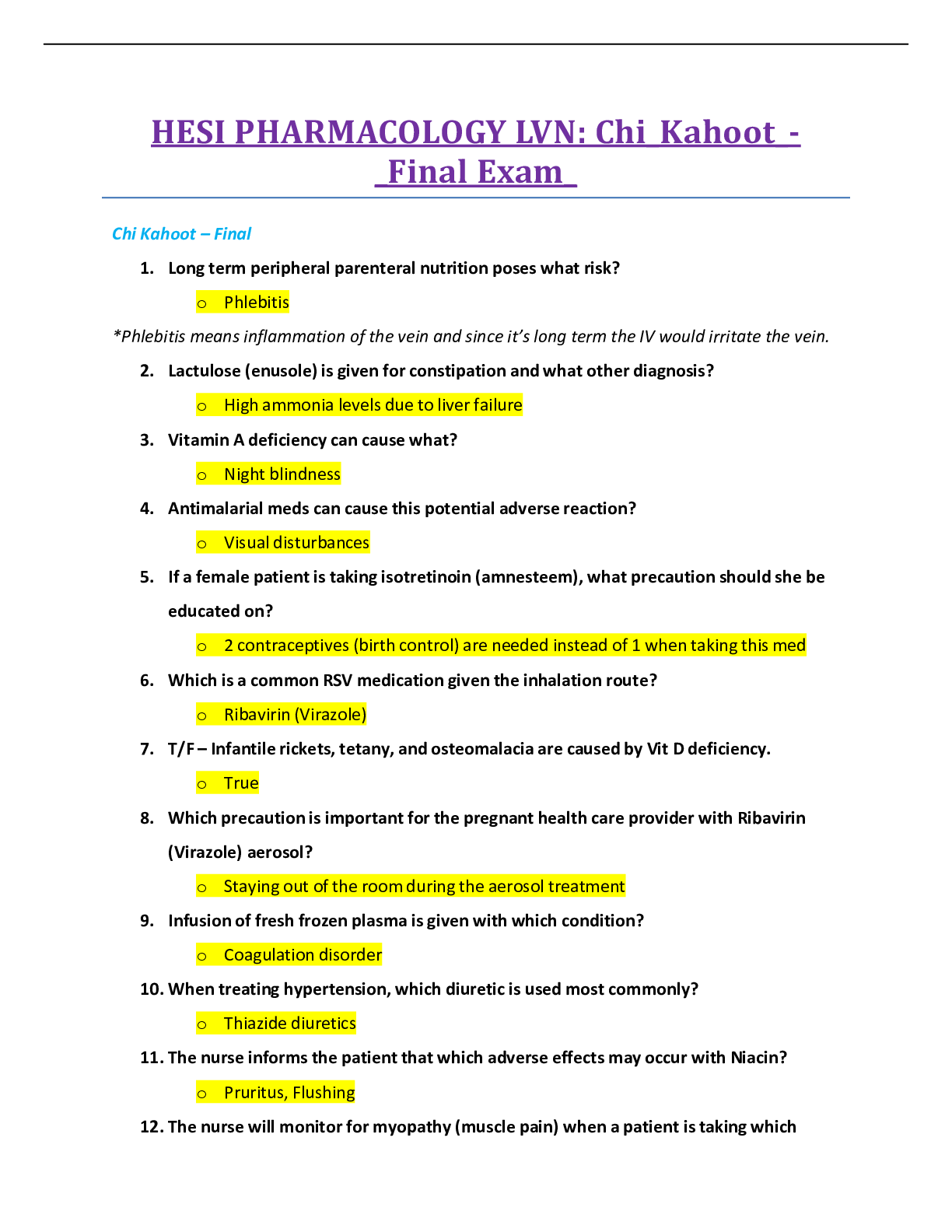


 Designed to Help You S core A+ HEALTH ASSESSMENT HESI TEST BANK; Fall 2022.png)
 RN EXIT Version 1 and Version 2 EXAM TAKEN JAN 2022 GRADED A+ Screenshots Provided For All Questions.png)
 – All 160 Questions & Answers!! (Actual Screenshots from exam taken in April 2022 A+) (All Included!!) (I received 1178 score).png)


.png)
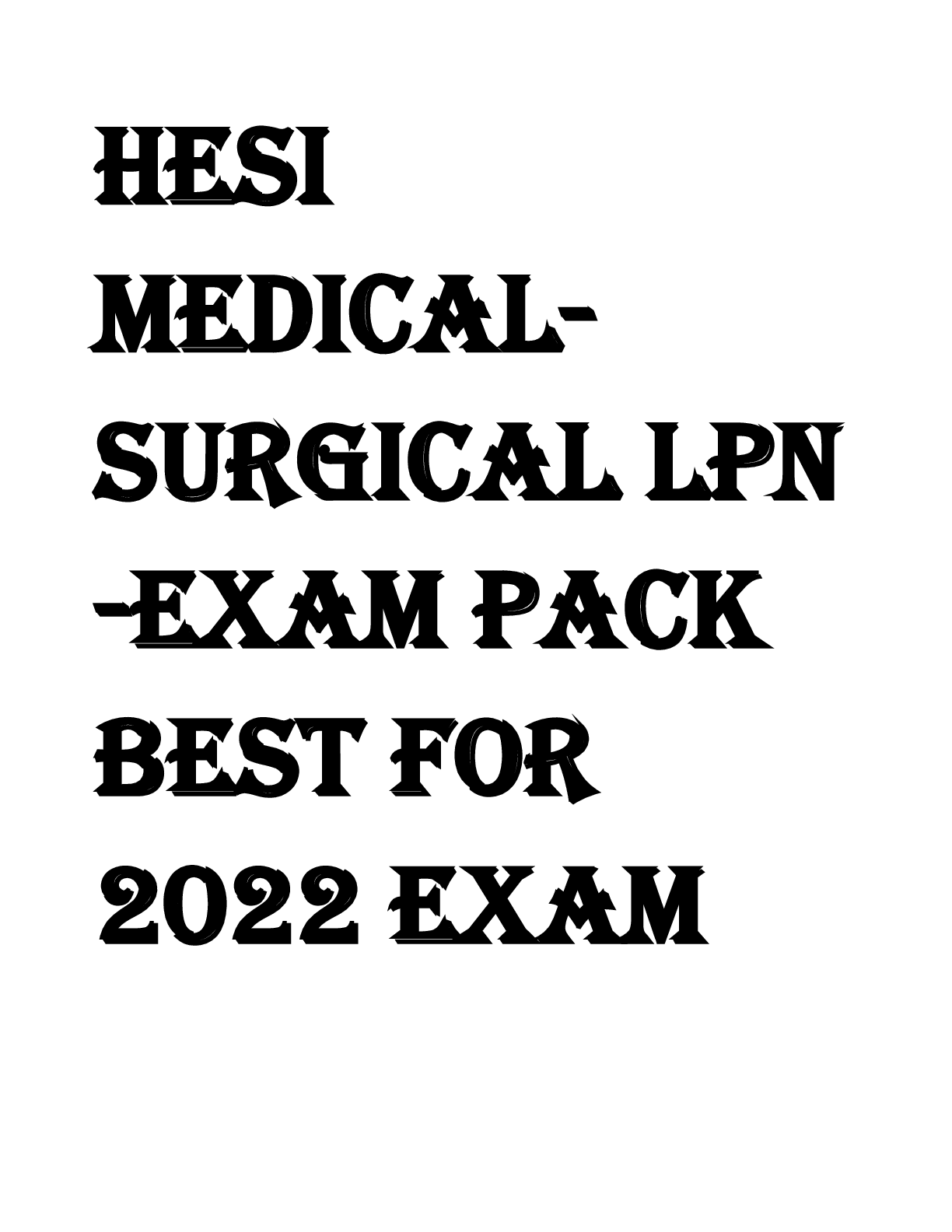

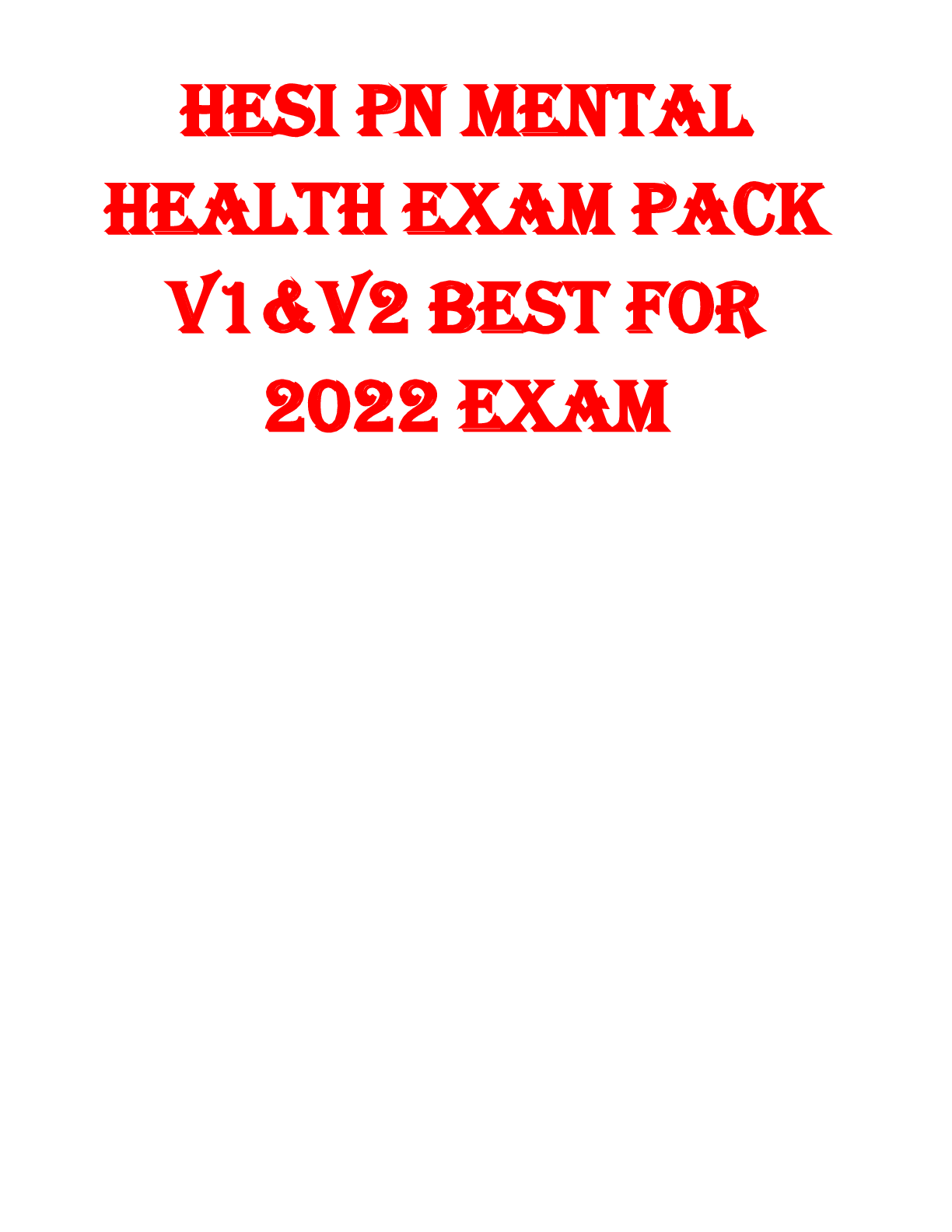

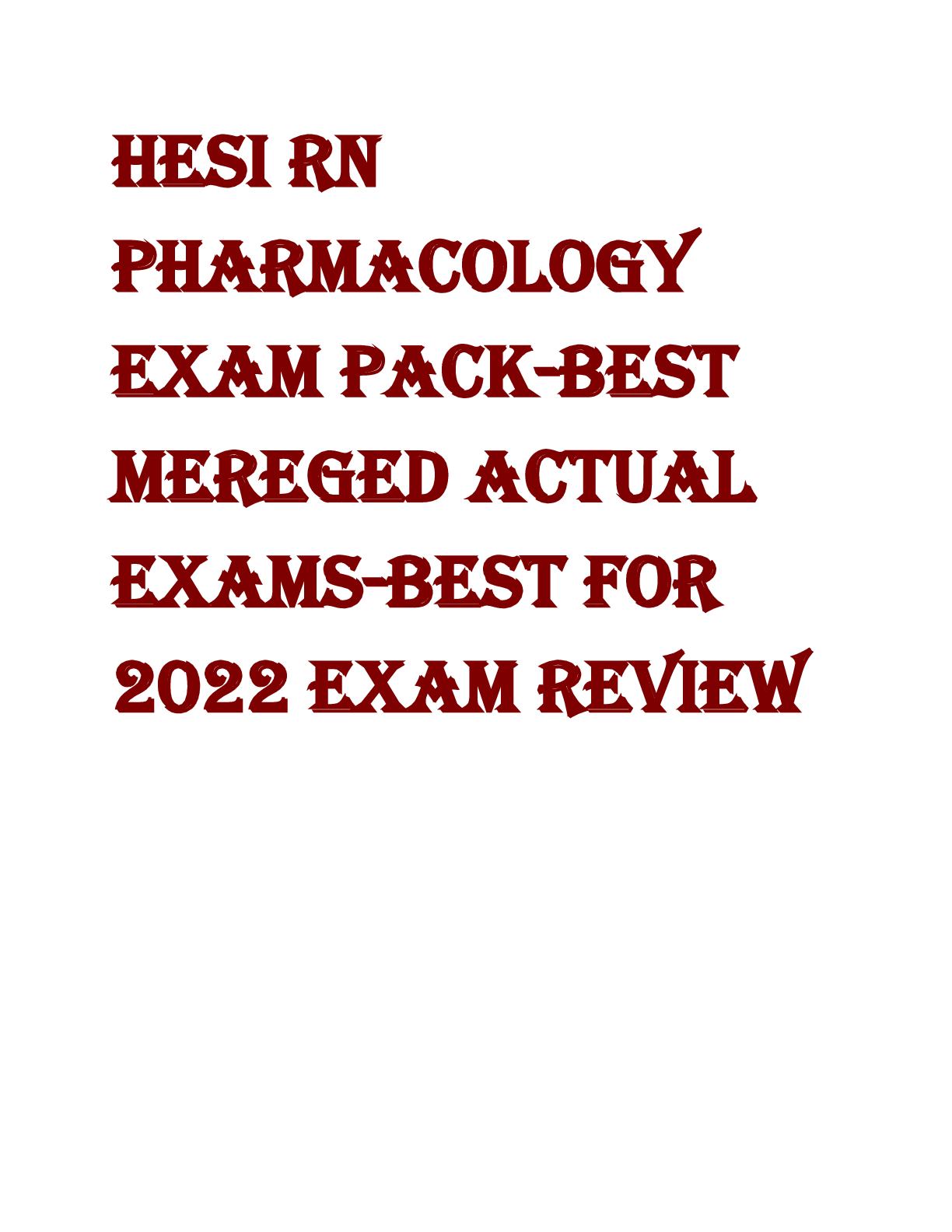
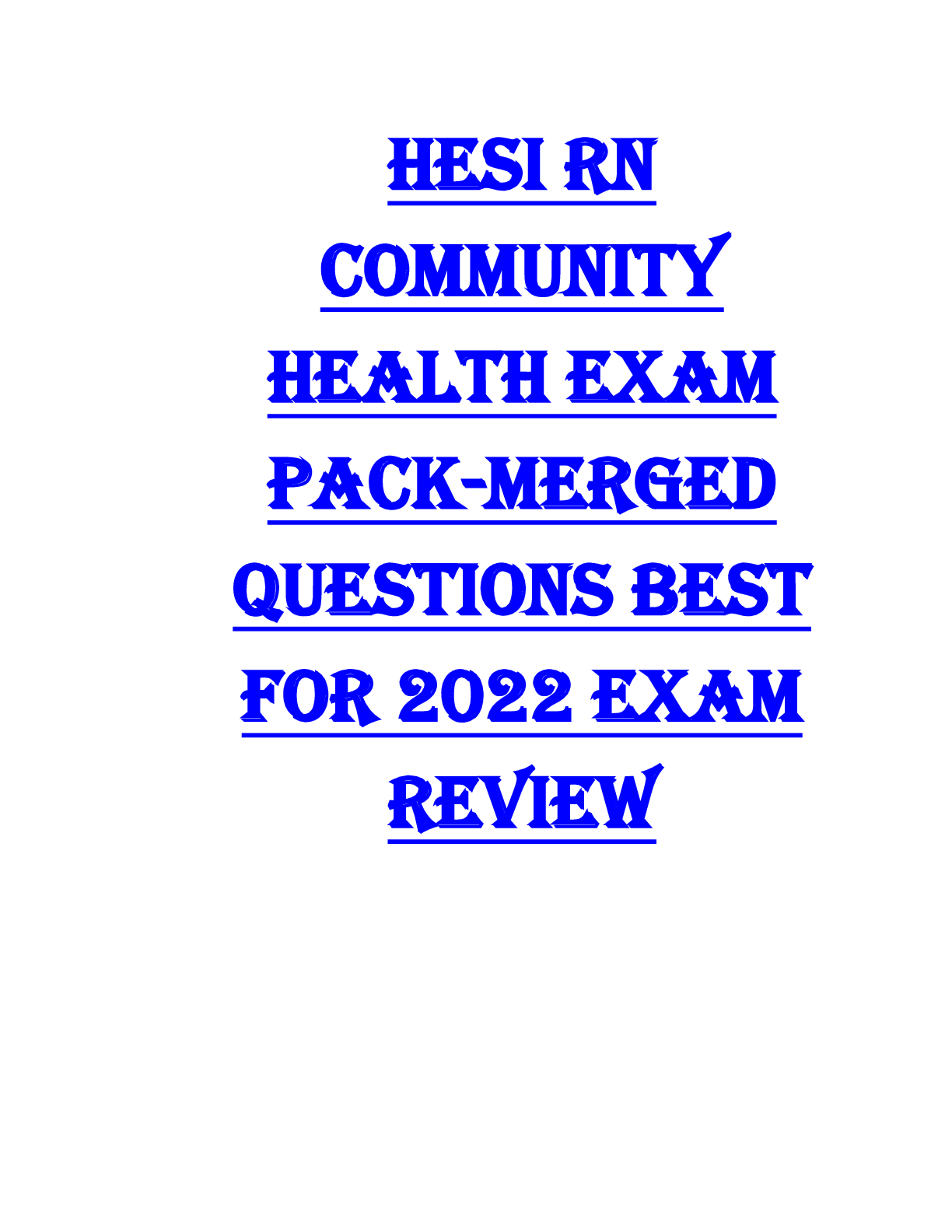
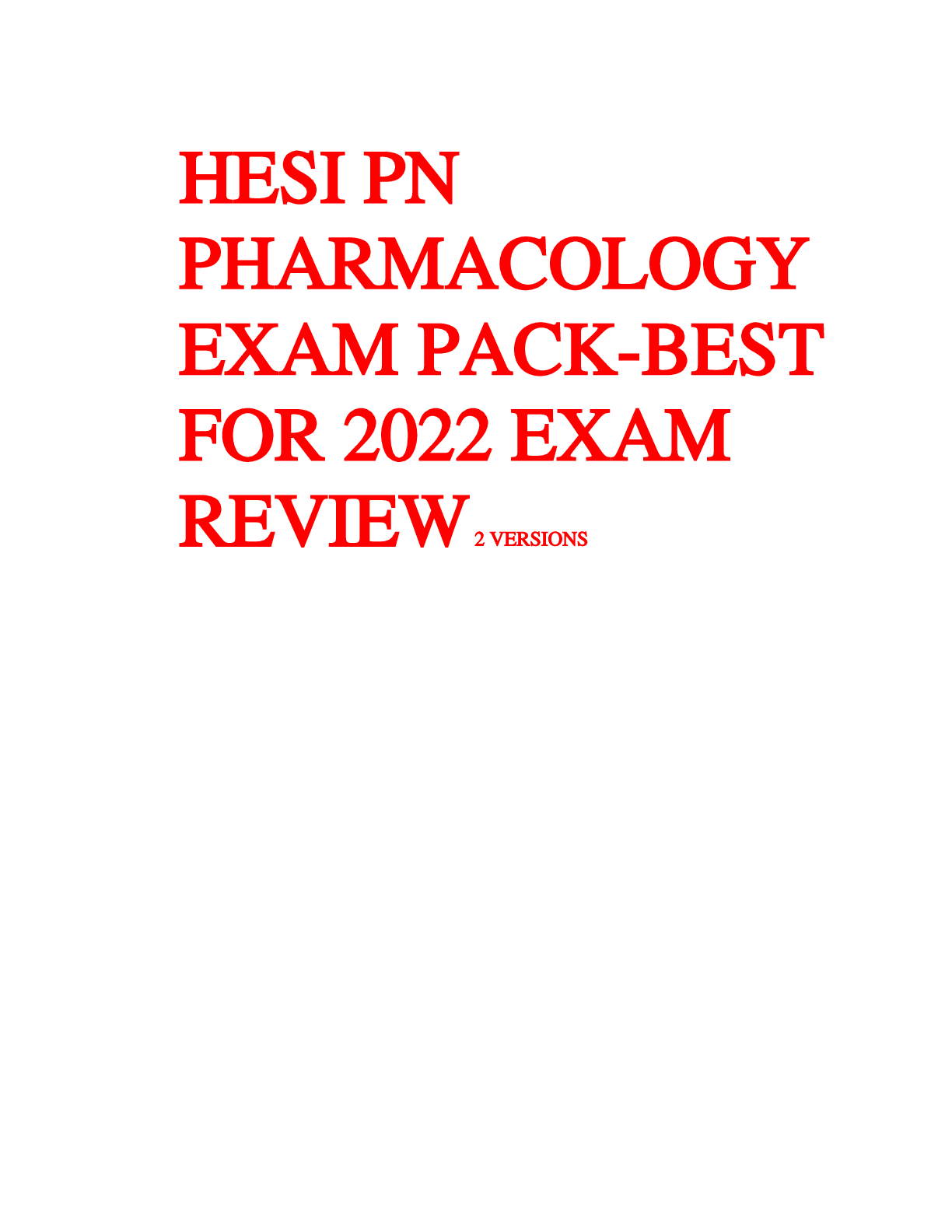
.png)
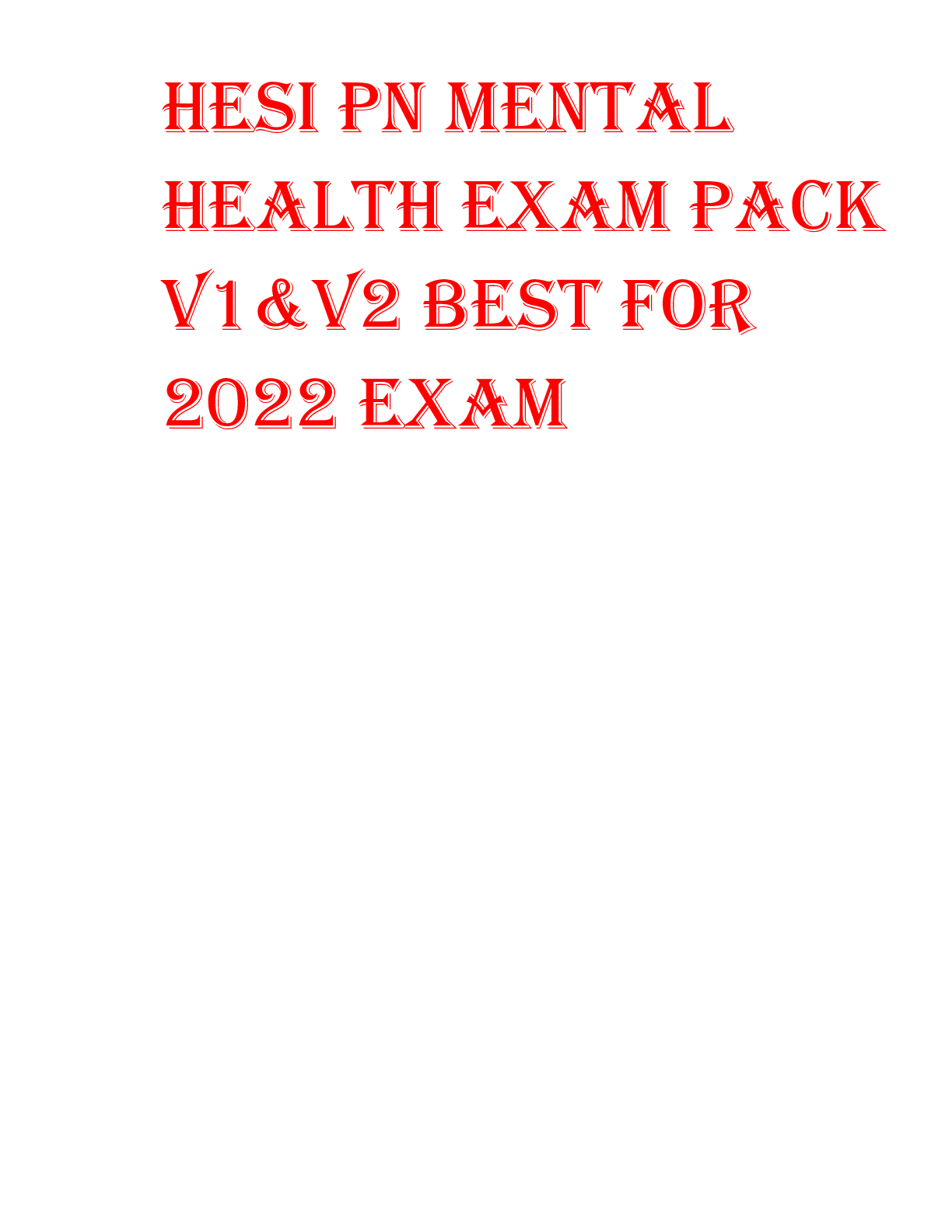
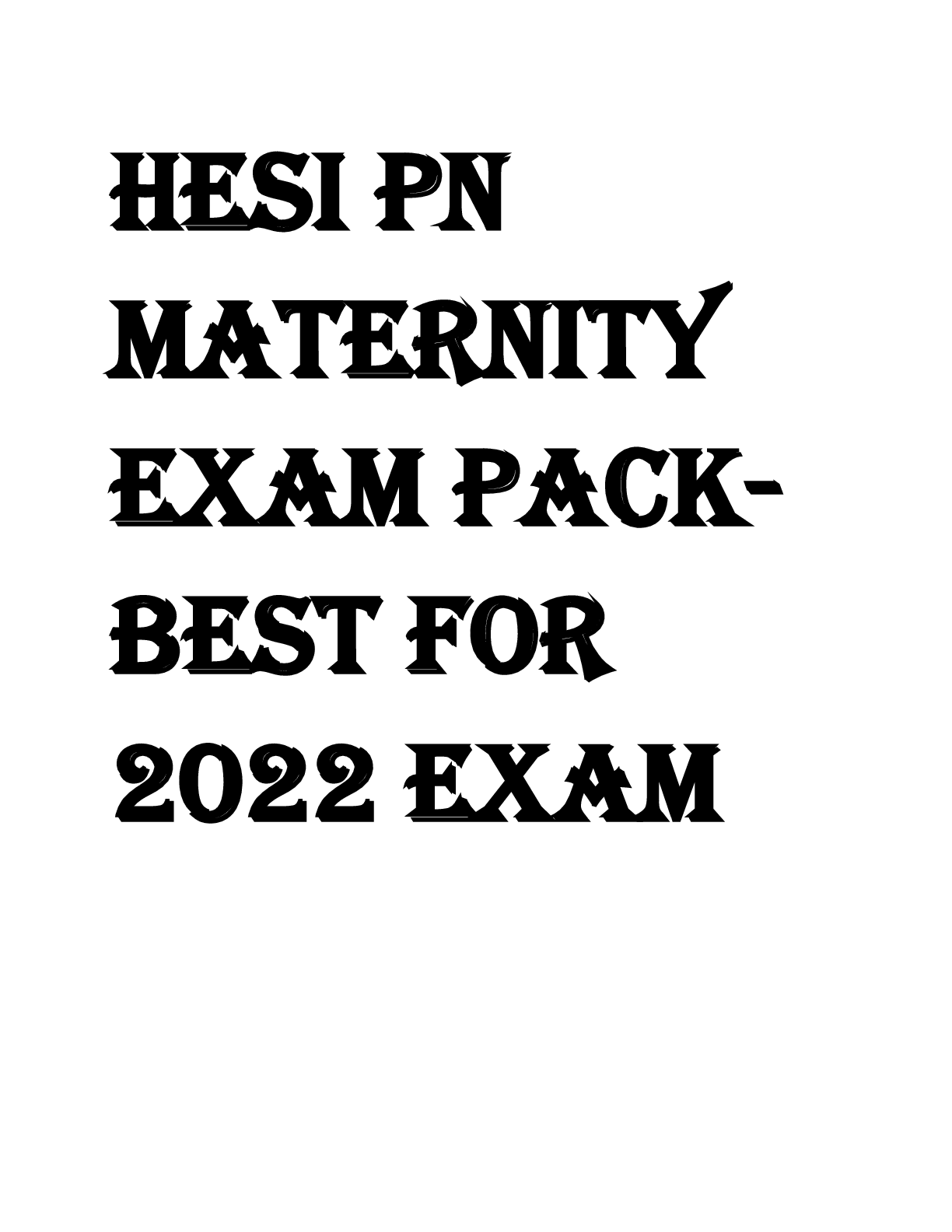
.png)
